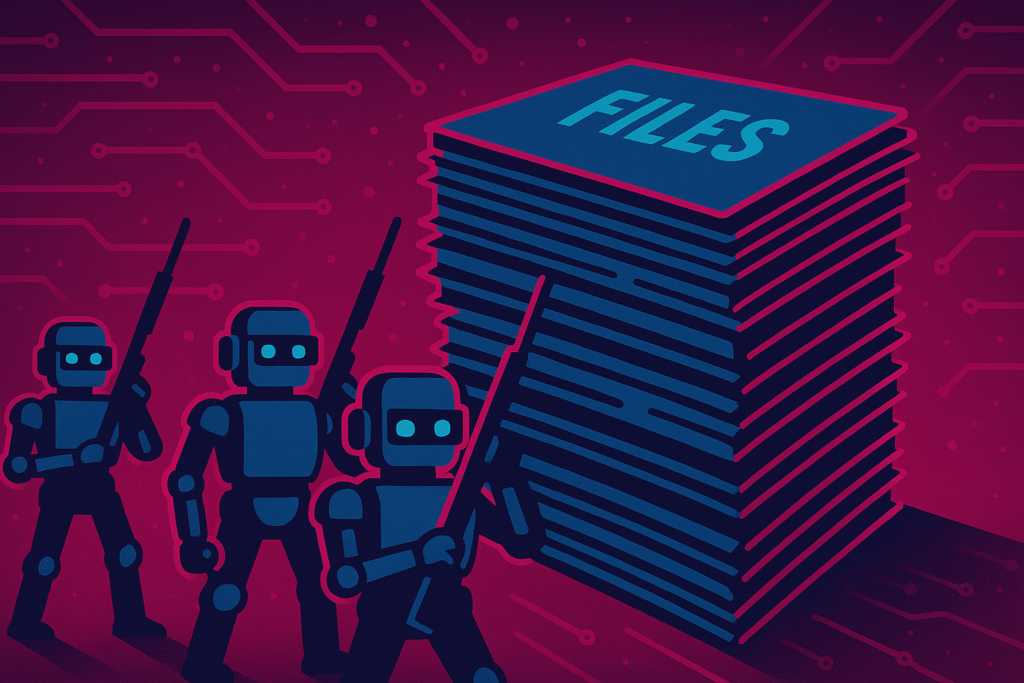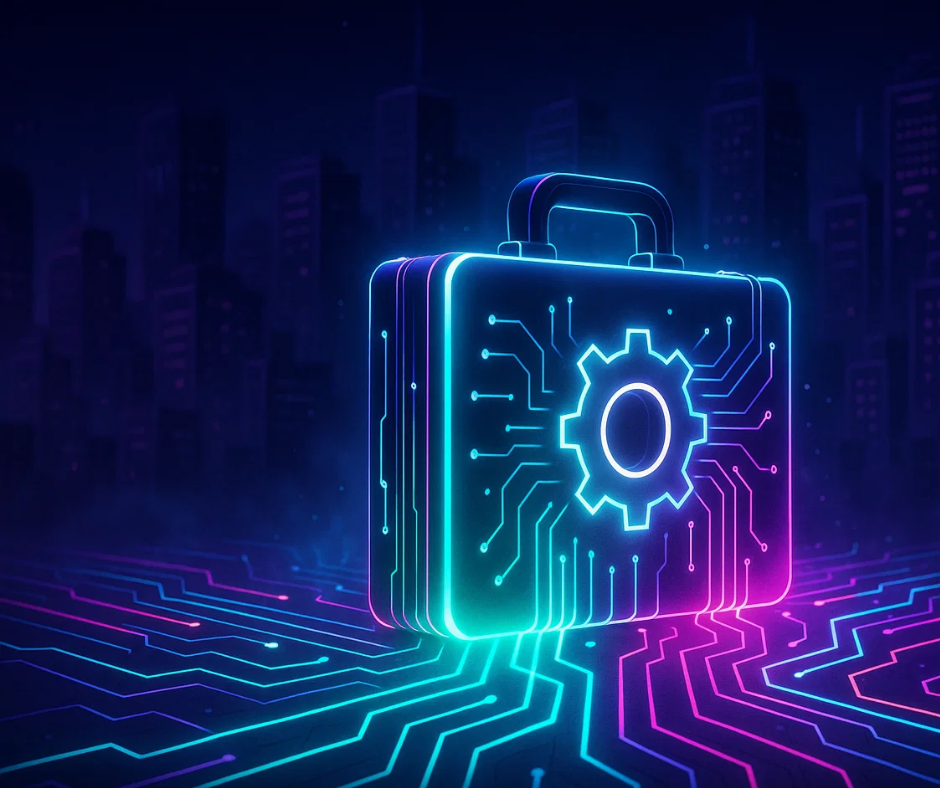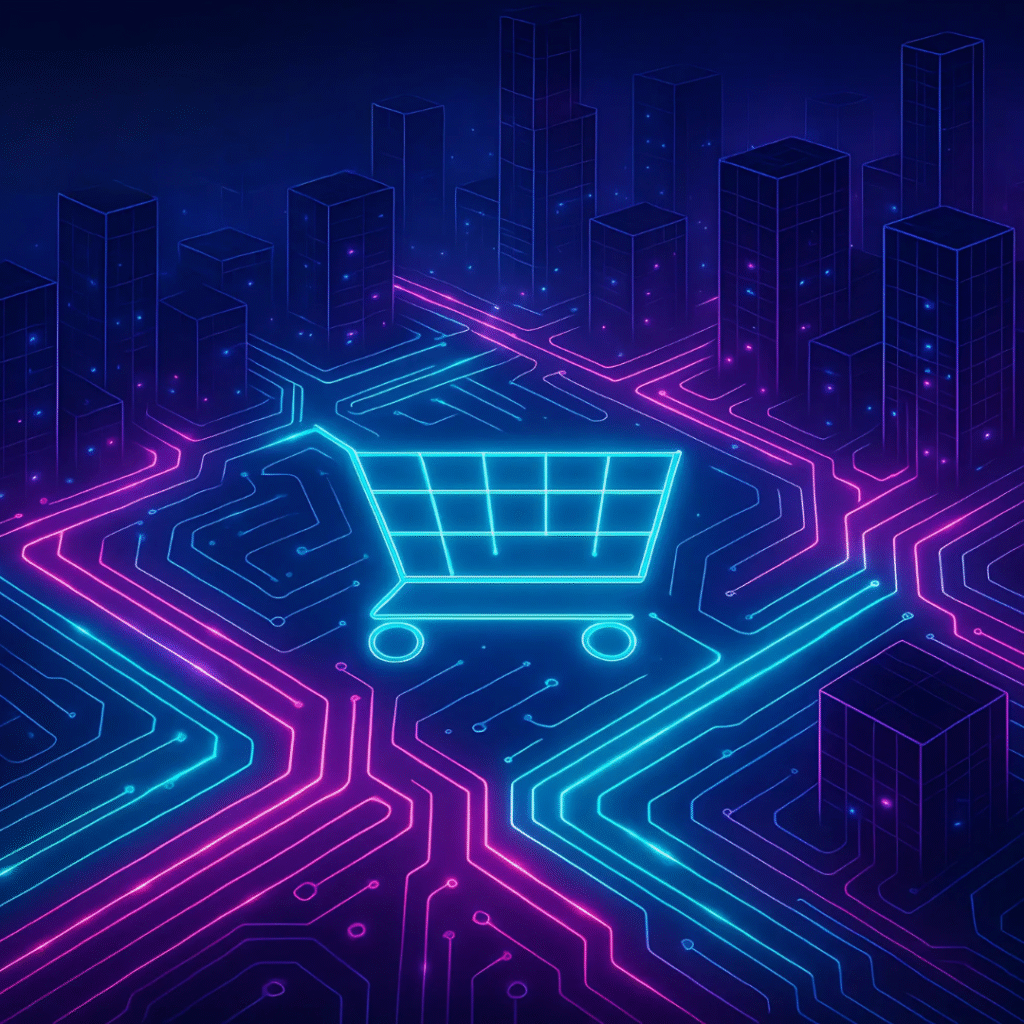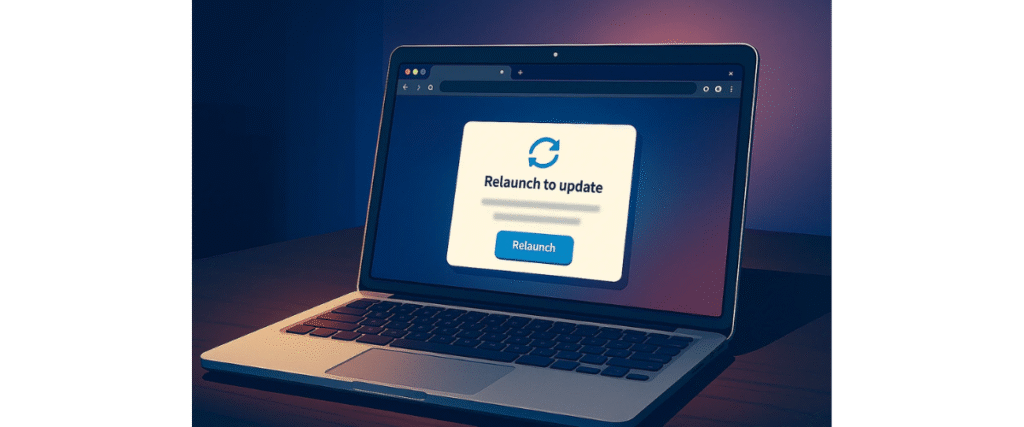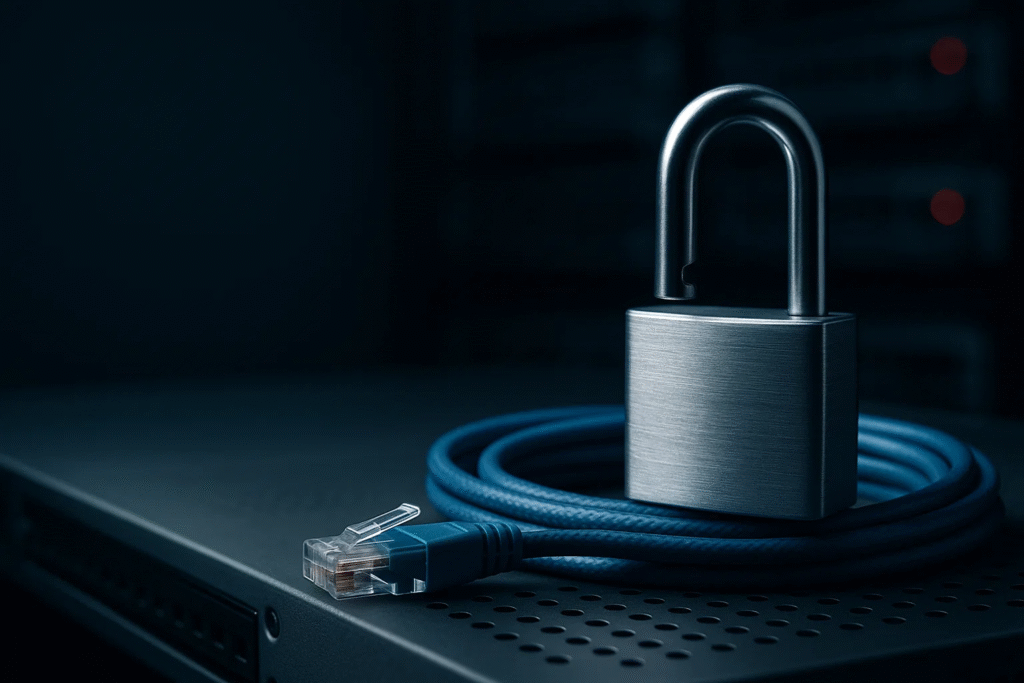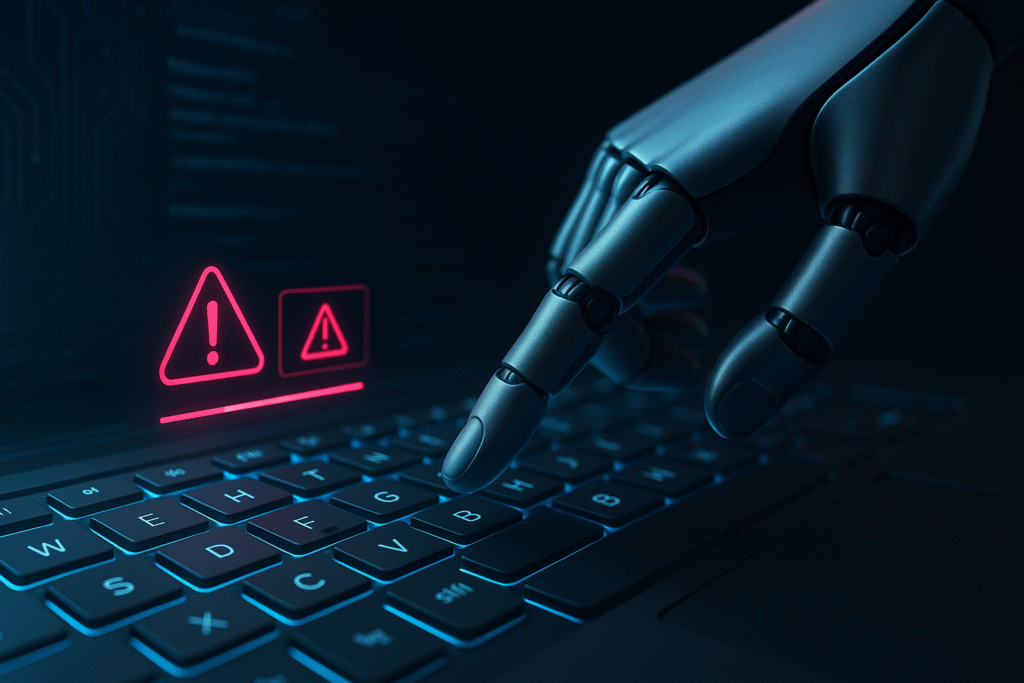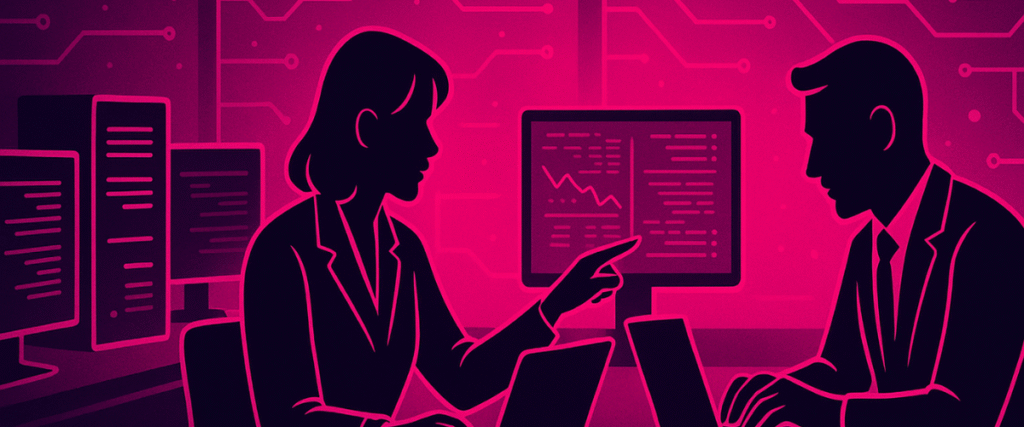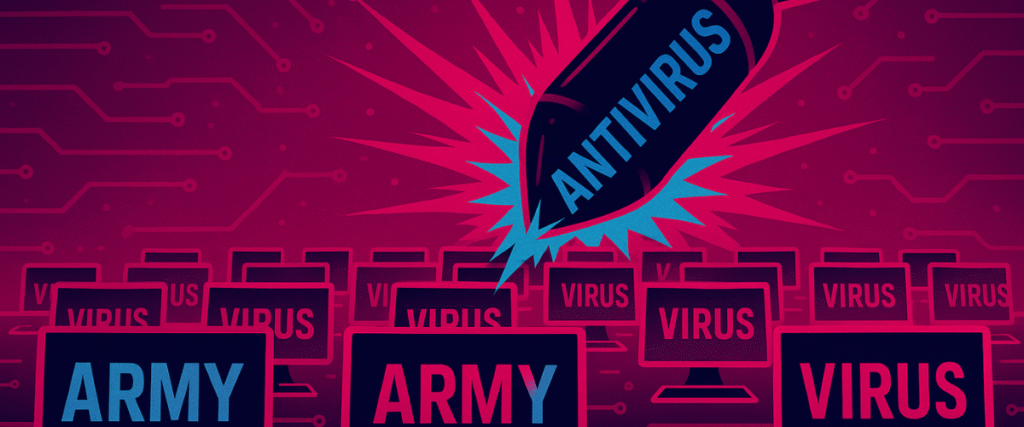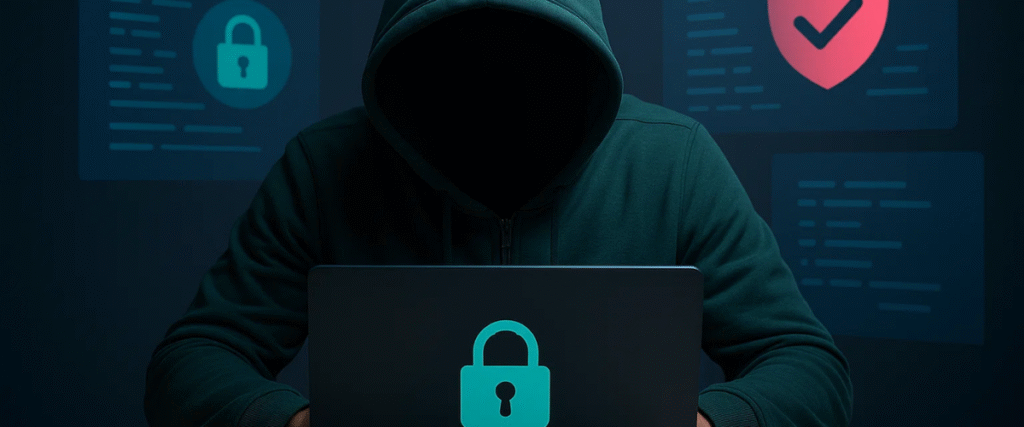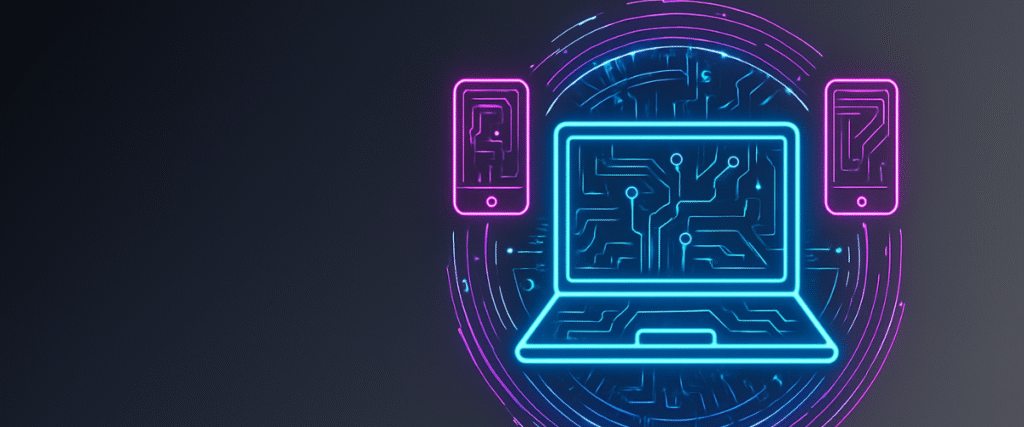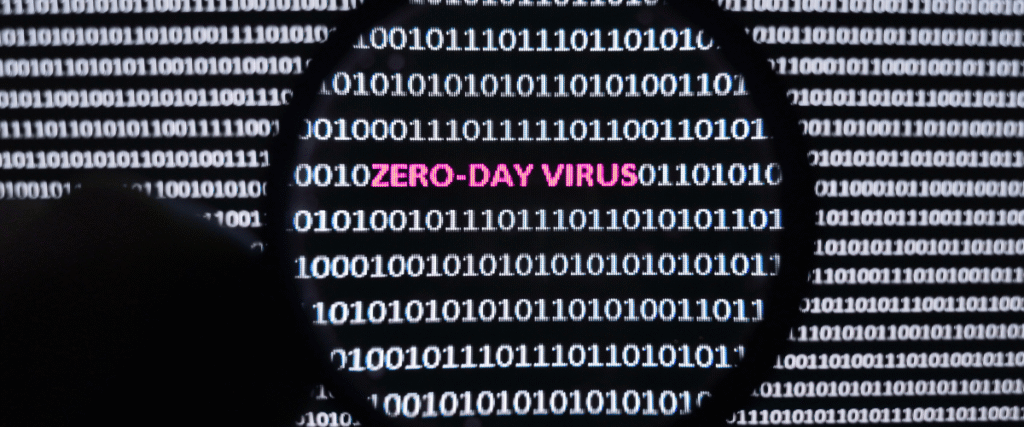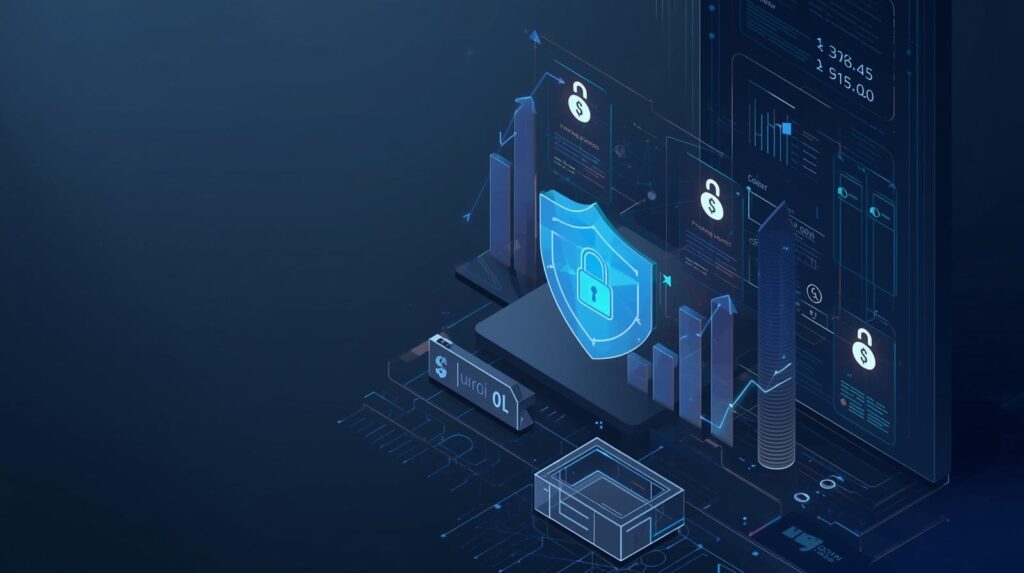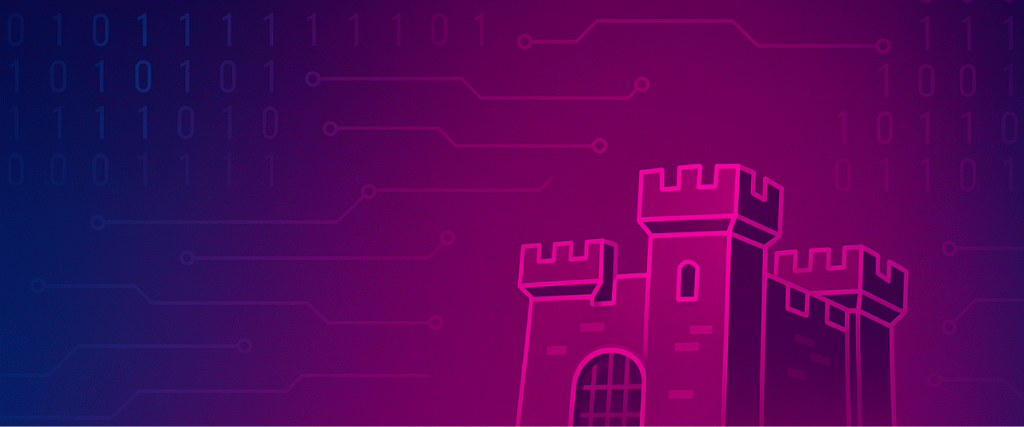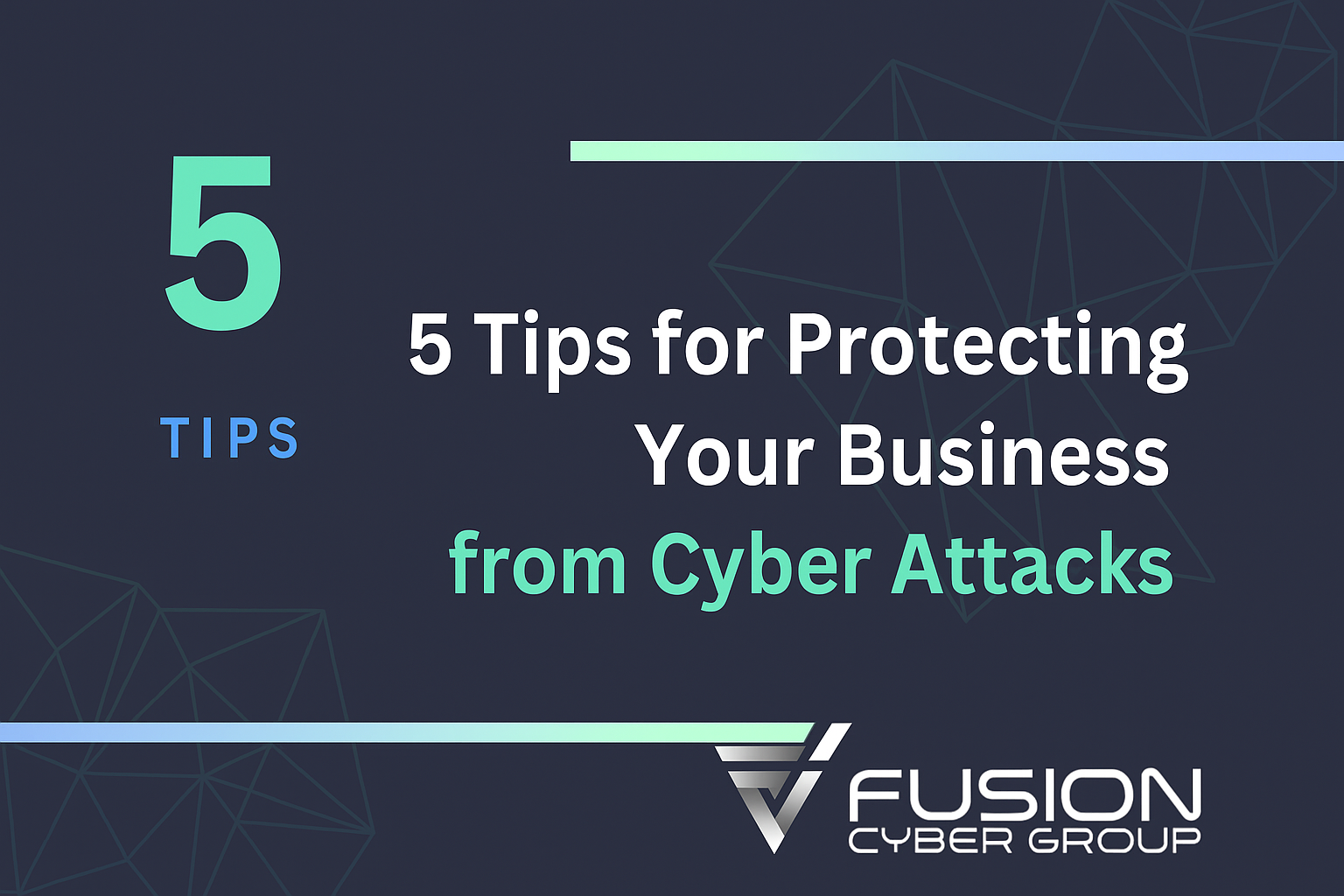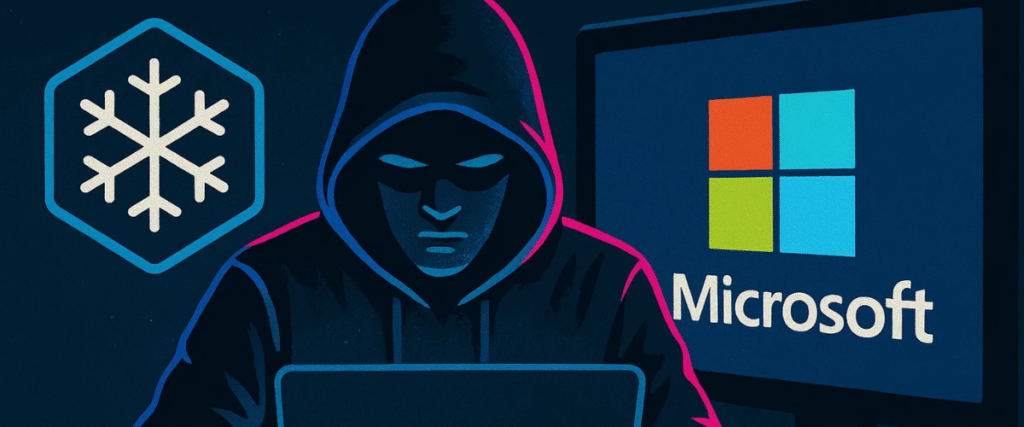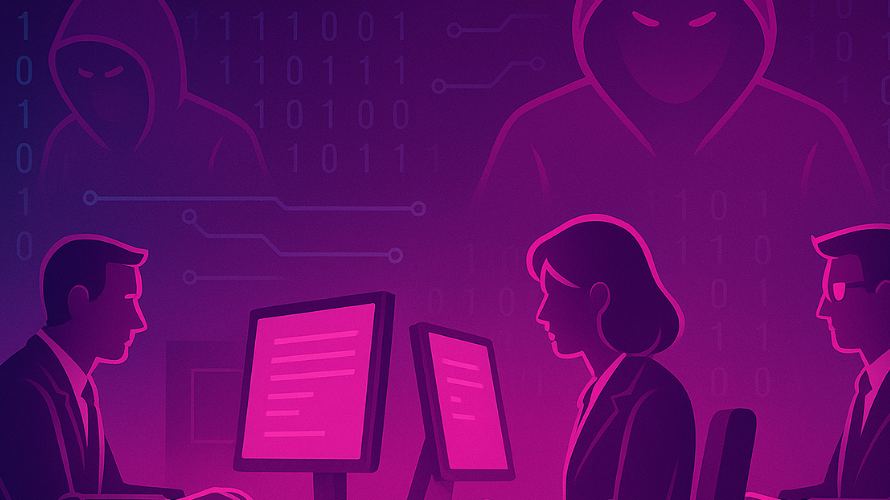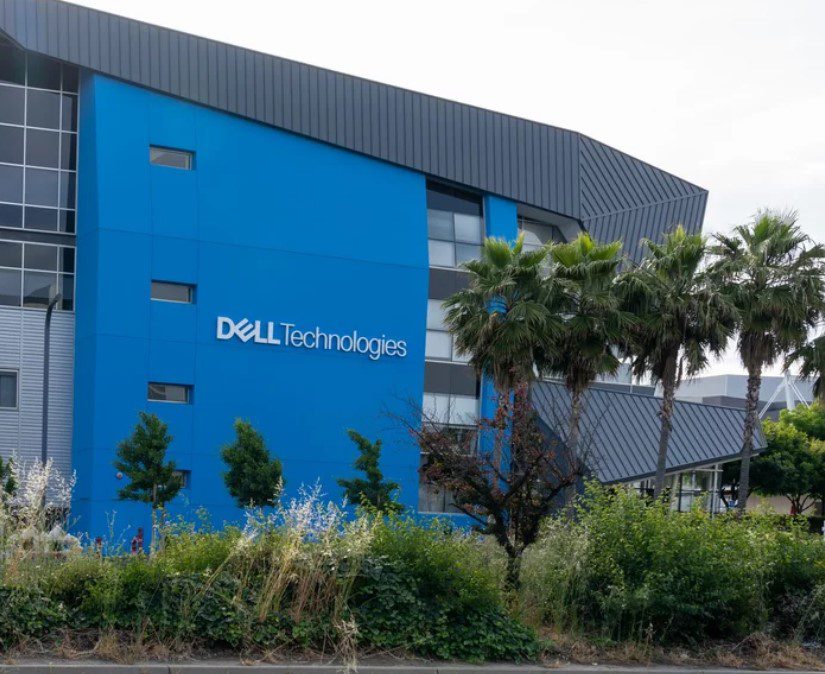
Cyberattacks are Global — Fast, Disruptive, and Devastating
Security breaches aren’t just IT issues — one weakness can disrupt supply chains, crash systems, and erode trust.
Don’t wait until the next attack makes headlines. Talk to a FusionCyber expert today to defend your business with enterprise-grade security.
The Expanding Risk of Modern Cybercrime
The growing landscape of cyber threats sheds light on the serious impact of security breaches and IT meltdown on businesses and their operations. Cyberattacks thrive on opportunism. Hackers are constantly scanning for weaknesses, probing networks, and testing defenses. Once they identify an opening — an unpatched system, a reused password, or an unsuspecting employee — they strike fast, often causing significant damage before an organization even realizes it has been compromised. For small and mid-sized businesses (SMBs), this presents a particularly alarming challenge: the assumption that “we’re too small to be a target” is no longer true, and attackers know it. In fact, they often consider SMBs the easiest path to larger rewards.
Recent research confirms the scale of the issue. According to the Ponemon Institute, 68% of SMBs reported at least one cyber incident in the past year. That means more than two out of every three businesses have already faced disruptions ranging from data theft to ransomware and phishing campaigns. In industries such as healthcare, finance, and professional services, the risks are amplified because these sectors handle highly sensitive data — from patient records and credit card information to confidential legal files and proprietary business information. Criminals know that this type of information commands a high price on the black market, making these industries especially attractive and lucrative targets for cybercrime groups.
What’s even more concerning is the ripple effect of a single breach. SMBs are frequently embedded in larger supply chains, serving as vendors, contractors, or service providers for much larger organizations. When one smaller firm is compromised, attackers often use that access to move upstream into enterprise networks. A single weak link can therefore disrupt an entire industry ecosystem, creating widespread consequences that extend far beyond the original point of attack.
Real world example
A ransomware attack on a 200-employee logistics provider in Ontario disrupted its scheduling systems, delaying shipments across multiple North American manufacturers. What began as a single company’s IT problem quickly escalated into financial and operational losses throughout the supply chain — showing how one SMB breach can create far-reaching consequences.
Types of Breaches That Disrupt Business
Executives often hear the term “cyberattack” and think of it as a single category. In reality, there are multiple types of breaches, each with its own consequences and challenges. Understanding these distinctions helps leaders make better decisions about defenses, investments, and recovery planning.
- Data Breaches: The theft or exposure of sensitive information such as customer records, intellectual property, or financial data. These breaches often lead to compliance violations, lawsuits, and permanent reputational harm. Once data is out, it cannot be retrieved — and the loss of trust can be harder to repair than the direct financial damage.
- Ransomware Attacks: A form of digital extortion where hackers encrypt an organization’s files and demand payment for their release. For SMBs, ransomware is especially damaging because downtime can stretch into weeks, and ransom payments can exceed annual IT budgets.
- Phishing & Credential Theft: Often underestimated, phishing remains one of the most successful attack methods. By imitating trusted senders or executives, hackers trick employees into giving away passwords or clicking malicious links. One careless click can open the door to catastrophic breaches.
- Denial-of-Service (DoS) Attacks: These attacks overwhelm systems or networks with traffic until they crash. While less glamorous than ransomware, DoS attacks can be devastating for service providers or e-commerce businesses, where even a few hours of downtime translates into lost revenue and angry customers.
Each type of breach demonstrates a core reality: attackers don’t need to break everything — they only need one way in. That’s why layered defenses and ongoing vigilance are essential.

How Cybercriminals Strike: Tactics You Must Know
Cybercriminals are no longer lone hackers working from basements. They operate like highly organized groups with advanced tools and specialized tactics. Today’s methods are a mix of technical exploits and human manipulation.
- Phishing & Spear-Phishing: Instead of broad, generic scams, modern phishing is personalized. Attackers use AI to craft emails that look like they came from your CEO, your bank, or even your regulator. Employees — even executives — fall victim because the messages are nearly indistinguishable from legitimate communication.
- Exploiting Unpatched Systems: Many organizations run outdated software or skip routine updates. Hackers know this, and automated bots constantly scan the internet for known vulnerabilities. A system left unpatched can be compromised within hours of a security flaw being announced.
- Insider Threats: Not all risks come from the outside. Disgruntled employees, contractors with excessive access, or even well-meaning staff making careless mistakes can open the door to attackers. Studies suggest insiders contribute to over 30% of breaches.
- AI-Powered Attacks: Criminals now leverage artificial intelligence to automate reconnaissance, generate deepfake audio/video, and test malware variations until one slips past defenses. This automation accelerates attack timelines from weeks to mere hours.
The takeaway for executives is sobering: cybercriminals only need to succeed once, while businesses must defend every possible entry point, every single day.
The Threats Facing SMBs and Enterprises
The fallout from breaches is broader than most leaders realize. It’s not just about losing access to data — it’s about the cascading business consequences that can undermine every pillar of operations.
- Financial Theft & Fraud: Business email compromise and invoice fraud schemes siphon millions from SMBs every year. Funds can disappear in minutes through fraudulent transfers, and recovery is rare once money moves offshore. Attackers often study internal communication patterns, making fraudulent requests appear legitimate to finance teams.
- Reputation Damage: Customers who learn their data was exposed rarely forgive, even if the breach is contained. A single incident can undo years of brand-building, fuel negative media coverage, and drive clients straight to competitors who are perceived as more secure. Reputational harm is long-lasting and often harder to repair than financial losses.
- Operational Downtime: When IT systems collapse, the ripple effects are immediate. For manufacturers, machines sit idle; for hospitals, treatments are delayed; for financial firms, transactions freeze. Every hour of downtime translates into lost revenue, regulatory risk, and frustrated customers.
- Regulatory Penalties: Compliance frameworks such as GDPR, HIPAA, and Canada’s PIPEDA mandate strict safeguards. Breaches can trigger audits, fines, and legal scrutiny — not just from regulators, but from clients who may demand evidence of due diligence.
- Supply Chain Fallout: Attacks rarely stop with one company. A compromised SMB can expose vendors, partners, and customers, creating a domino effect. Criminals increasingly exploit smaller firms as gateways into enterprise networks, multiplying both the impact and the ransom demands.
Together, these risks highlight a clear truth: a breach is never an isolated event — it is a business-wide disruption that can spread far beyond the original victim.

Lessons from the Frontlines: When IT Meltdown Goes Global
Large-scale incidents make headlines, but they also carry powerful lessons for SMBs. The Colonial Pipeline ransomware attack of 2021 remains one of the clearest examples. In that case, a single compromised system forced the company to shut down its pipeline operations, leading to fuel shortages across multiple U.S. states, billions in economic impact, and significant reputational damage. The disruption didn’t just affect the company itself; it impacted airlines, trucking companies, consumers, and the broader economy. It proved that one successful attack can quickly escalate into a crisis of national importance.
For SMBs, the scale may differ, but the principle is the same — critical dependencies mean local incidents never stay local. If your company provides essential services, whether in logistics, healthcare, professional consulting, or financial transactions, even a short period of downtime can cascade outward to affect hundreds or even thousands of clients. A law firm unable to access client data, a regional hospital locked out of patient records, or a logistics company unable to manage shipments can create a chain reaction that damages trust, delays operations, and incurs costly penalties.
Attackers understand this interconnectivity, which is why they increasingly target smaller organizations as stepping stones into larger networks. Breaching an SMB that supplies services to bigger enterprises often grants attackers indirect access to those larger environments. This tactic allows criminals to maximize impact and ransom potential with minimal effort.
The lesson is clear: what starts as a local IT issue can escalate into a global disruption with far-reaching financial, operational, and reputational consequences. SMBs must treat every vulnerability as a potential entry point not just into their own systems, but into the broader ecosystems they support.
Key Takeaways for Executives
Cyberattacks are inevitable, but their impact can be minimized with proactive strategy
In today’s hyper-connected world, no organization can claim immunity from cyber threats. Attackers are constantly scanning for vulnerabilities, and even the best defenses can be tested. For SMBs, the question isn’t if an incident will occur, but when. The difference between survival and catastrophe lies in preparation. By adopting layered defenses, establishing an incident response plan, and training employees to spot risks, businesses can contain attacks before they spiral. Proactive measures don’t eliminate threats, but they do reduce their impact, transforming what could have been a devastating breach into a manageable event.
SMBs are prime targets because attackers assume defenses are weaker
Hackers often see SMBs as “soft targets.” Limited budgets, smaller IT teams, and outdated tools make these organizations attractive entry points. Beyond direct impact, SMBs are also valuable to attackers because of their supply chain connections — compromising one small vendor can open doors into much larger enterprise networks. For leaders, this reality underscores the urgency of building stronger defenses. Size is not protection; in fact, it can make your business more appealing to cybercriminals. Recognizing this risk is the first step toward closing the gaps that attackers are counting on.
Recovery costs far exceed prevention investments — in some cases by a factor of ten
It’s natural for SMBs to question the cost of cybersecurity, but the numbers are clear: recovery is far more expensive than prevention. A ransomware incident, for example, doesn’t just bring ransom demands. It causes downtime, lost revenue, reputational harm, and regulatory fines. Studies show that every dollar spent on prevention can save businesses many times more in avoided losses. By contrast, failing to invest in cybersecurity can put the entire organization at risk. For executives, this isn’t just an IT expense — it’s a financial safeguard and an insurance policy for business continuity.
Partnering with MSSPs and MSPs ensures scalable, enterprise-grade defenses that SMBs can’t replicate in-house
Building an in-house cybersecurity team is out of reach for most SMBs. Recruiting skilled staff, maintaining 24/7 monitoring, and keeping pace with evolving threats require resources that many mid-sized firms simply don’t have. Partnering with a Managed Security Service Provider (MSSP) or Managed Service Provider (MSP) bridges that gap. These experts deliver enterprise-level monitoring, advanced detection tools, and compliance support at a fraction of the cost of doing it internally. For business leaders, outsourcing provides peace of mind and allows them to focus on growth, knowing that critical assets are being monitored and protected around the clock.

Final Thoughts
Security breaches and IT meltdowns are no longer isolated events — they are global disruptors capable of destabilizing entire industries. For SMBs, the risks are amplified by limited resources, lean IT teams, and the critical role many play within larger supply chains. One vulnerability is all it takes for attackers to trigger cascading financial losses, reputational damage, and operational paralysis.
The lesson is clear: yesterday’s defenses cannot withstand today’s threats. Outdated antivirus, neglected patches, or reactive response plans are not enough to stop modern cybercrime. Businesses that continue to underestimate their exposure are leaving themselves vulnerable to disruptions that could halt operations overnight. Coupled with rising regulatory requirements and stricter insurance standards, the stakes for SMBs have never been higher.
But there is a path forward. By adopting layered defenses, proactive monitoring, and comprehensive employee training, organizations can reduce their risk dramatically. A single point of failure should never be allowed to cripple an entire business. With the right strategy, cybersecurity transforms from a cost center into a safeguard for growth, trust, and resilience.
Partnerships with Managed Security Service Providers (MSSPs) extend enterprise-grade protection to SMBs, delivering 24/7 monitoring, rapid incident response, and regulatory compliance at a fraction of the cost of building these capabilities internally. For SMB leaders, this is the most efficient way to match the sophistication of modern attackers.
The reality is simple: ignoring the global impact of security breaches and IT meltdowns is no longer an option. Every day without action is another day of risk.
Featured links:
Baseline Cybersecurity Controls for SMBs
SMB Cybersecurity Risks in 2025
FAQ:
Are SMBs really prime targets for cyberattacks?
Yes — SMBs are often the first targets. Criminals know that smaller firms usually lack the budget or staff for robust defenses, making them easier to breach. Nearly 70% of SMBs reported at least one cyber incident last year.
Attackers also see SMBs as gateways into larger supply chains. By compromising a smaller vendor, they can often access enterprise networks upstream. For that reason, no business is “too small” to be attacked — in fact, small size often increases the risk.
What types of cyberattacks should SMBs be most concerned about?
The most common and damaging threats include ransomware, data breaches, phishing, and denial-of-service (DoS) attacks. Each type can cause major disruption: ransomware locks you out of systems, phishing tricks employees into giving away credentials, data breaches expose sensitive information, and DoS attacks shut down websites or services.
What unites them is that attackers only need one weak spot. A single careless click, unpatched system, or stolen password can open the door to a full-scale breach.
How much does it actually cost to recover from a cyberattack compared to prevention?
Recovery costs far outweigh prevention — often by a factor of ten. Beyond ransom payments, businesses face downtime, lost revenue, fines, and long-term reputational damage. Many SMBs never fully recover.
On the other hand, prevention — regular patching, monitoring, and training — is far less expensive. Every dollar invested in proactive security saves many more in avoided losses.
What can SMBs do if they don’t have the budget or staff for full in-house cybersecurity?
Most SMBs can’t afford a dedicated, around-the-clock security team. That’s why many partner with Managed Security Service Providers (MSSPs) or Managed Service Providers (MSPs).
These partners provide enterprise-grade monitoring, rapid response, and compliance support at a fraction of the cost of building an in-house team. It’s the most practical way to match the sophistication of modern attackers without breaking the budget.
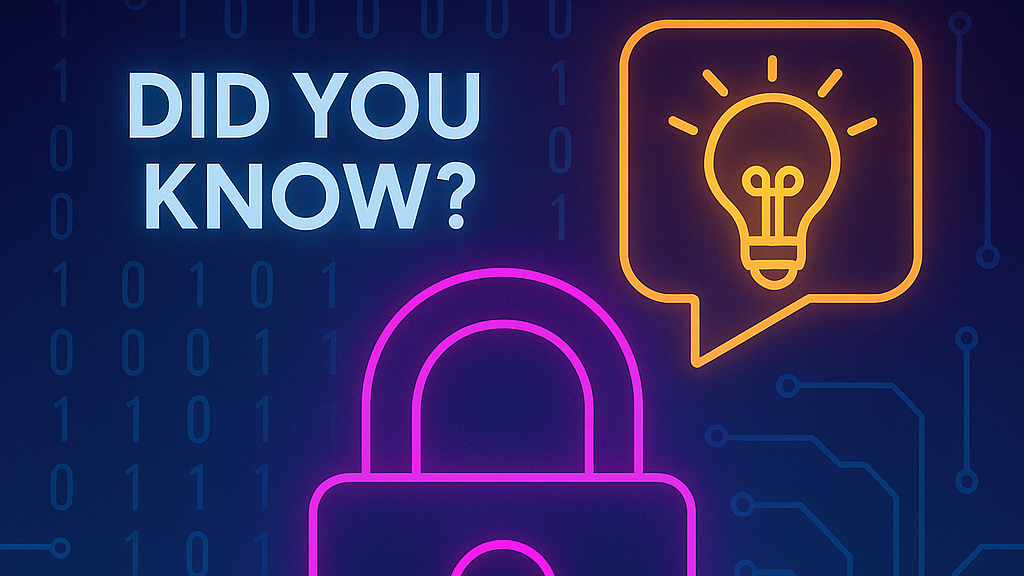
Did You Know?
The average time it takes for a company to detect a breach is 207 days — nearly seven months. During that time, attackers often move laterally, steal sensitive data, and sometimes even sell access on the dark web. For SMBs, this long “dwell time” can mean attackers are inside systems long before anyone notices. Reducing detection time through monitoring and AI-driven alerts is one of the most effective ways to minimize impact.
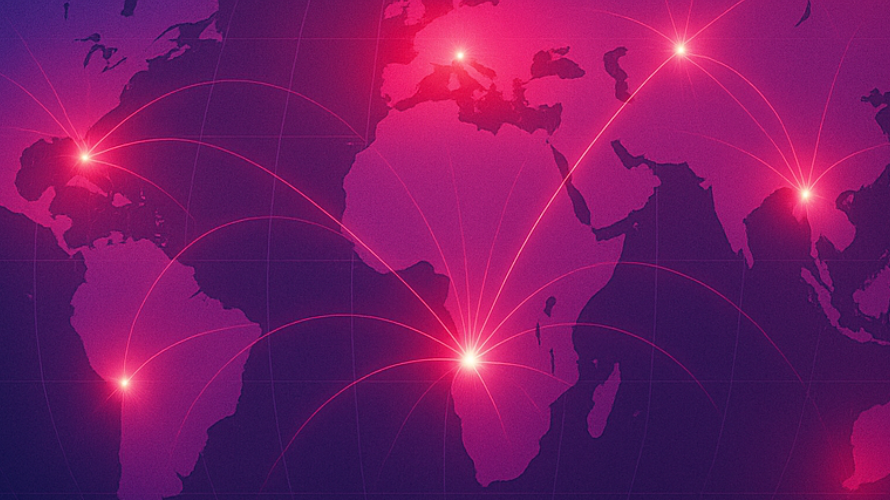
The Future of Cybercrime
By 2030, experts predict that cybercrime damages will cost the world over $10 trillion annually. Attacks are expected to become more automated, faster, and harder to detect. Deepfake scams, AI-powered phishing, and quantum-era encryption challenges could redefine what cybersecurity looks like. For SMBs, this future means one thing: building resilience today is the best way to stay competitive and trustworthy tomorrow.
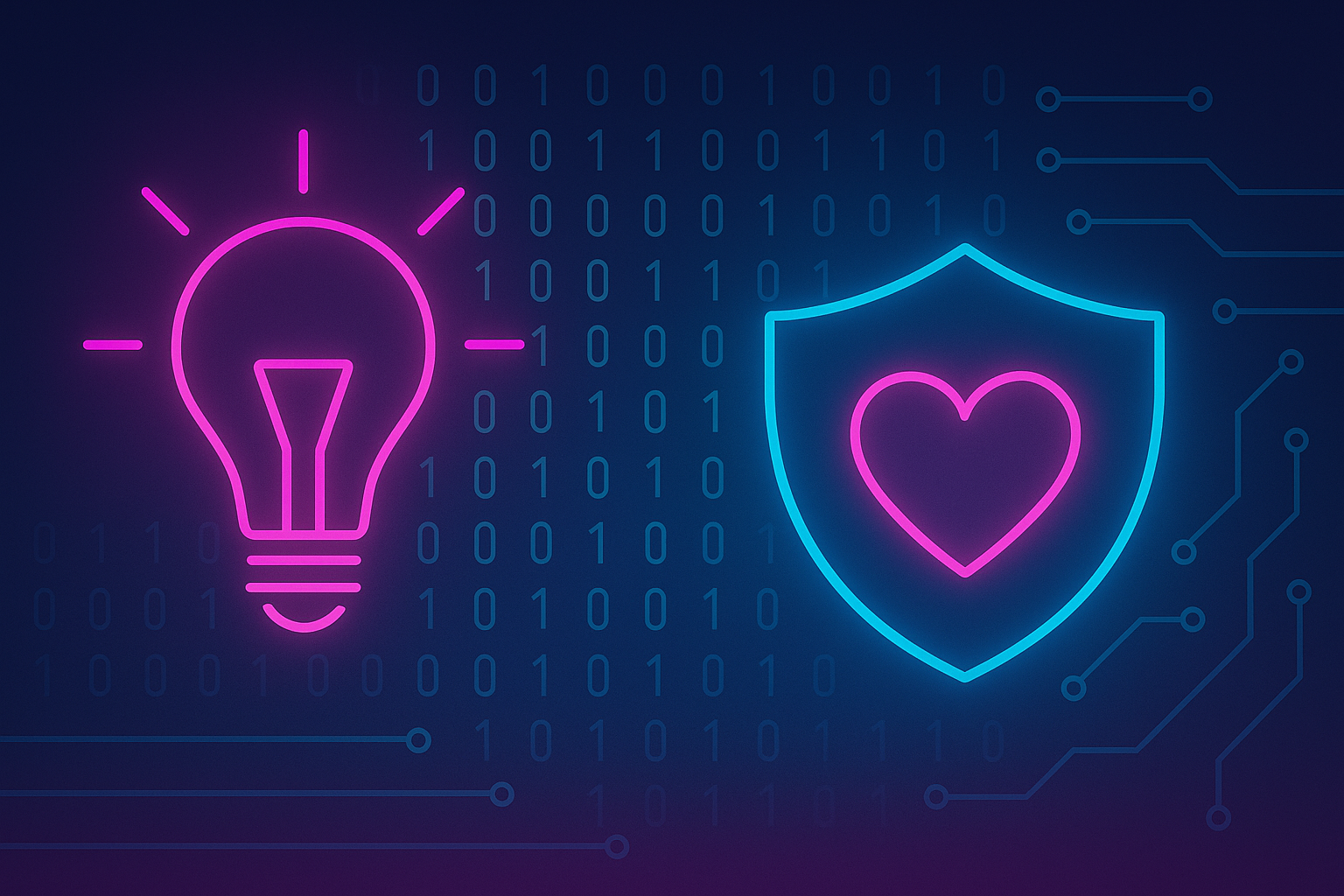
Funny but True
In 1999, a teenager created the “ILOVEYOU” virus by accident while experimenting with code. It spread through email subject lines and caused an estimated $10 billion in damages worldwide. While the incident is often remembered as almost comical, it underscores a serious point: even a seemingly simple or poorly written attack can have massive consequences when security awareness is low.
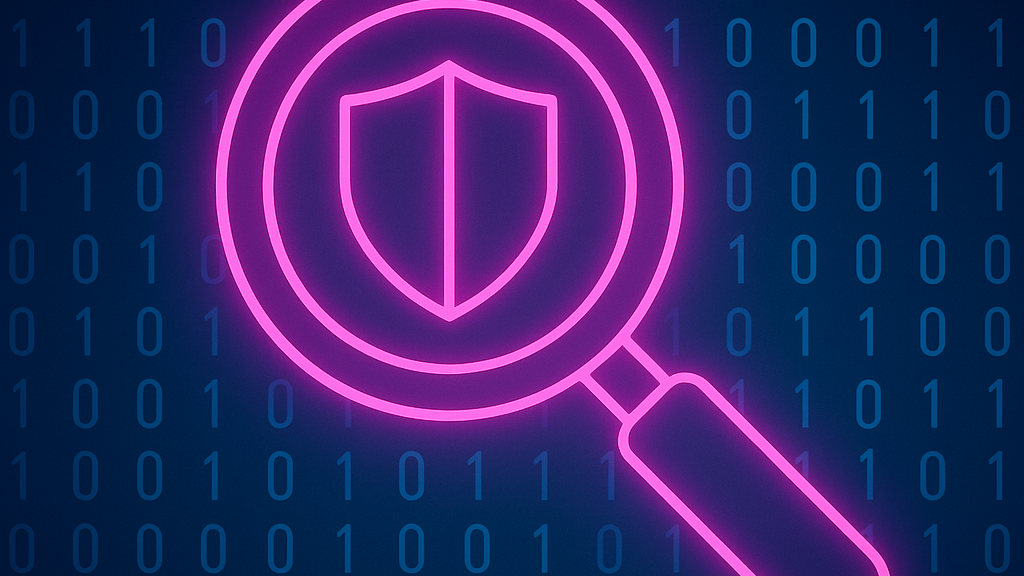
The Cost of Human Error
Studies show that over 90% of breaches involve human error — from clicking a phishing link to misconfiguring cloud storage. One famous case involved a major U.S. defense contractor where a single misplaced file exposed sensitive data online for weeks. While technology is critical, this statistic highlights that people remain the weakest link in cybersecurity. Ongoing awareness training, phishing simulations, and a culture of accountability are the best defenses. For SMBs, reducing human error can often be the single most cost-effective way to lower overall cyber risk.
Our Cybersecurity Guarantee
“At Fusion Cyber Group, we align our interests with yours.“
Unlike many providers who profit from lengthy, expensive breach clean-ups, our goal is simple: stop threats before they start and stand with you if one ever gets through.
That’s why we offer a cybersecurity guarantee: in the very unlikely event that a breach gets through our multi-layered, 24/7 monitored defenses, we will handle all:
threat containment,
incident response,
remediation,
eradication,
and business recovery—at no cost to you.
Ready to strengthen your cybersecurity defenses? Contact us today for your FREE network assessment and take the first step towards safeguarding your business from cyber threats!









